Propagate Lilac from Cuttings – How to Start New Plants
Rooting common lilacs (syringa vulgaris) from cuttings is an easy way to propagate this sweet-smelling spring and early summer favorite.
Taking cuttings is an age-old method of getting new plants from established ones to pass on or to expand your garden.
Do your parents, grandparents, or friends have a common lilac bush you would love to grow in your garden? Lilac propagation from taking softwood cuttings is an easy way to get more lilac bushes.
Today we will:
- Choose the lilac you wish to propagate also known as the mother plant.
- Take cuttings
- Give them some help with rooting hormone (indolebutyric acid)
- Place in rooting medium
- Cover and wait
Read on to see how it is done, and enjoy the step-by-step guide.

This post contains affiliate links. If you make a purchase after clicking a link I may make a small commission at no cost to you.
What You Will Need
To root lilac cuttings, you will need the following materials:
- A healthy lilac shrub
- A pair of sharp and clean pruners
- A pot or tray with potting soil, sand, or perlite
- A rooting hormone, powder, or cloning gel (either will work, I have used both)
- A clear plastic bag or humidity dome (I used a fish tank at one time which worked well)
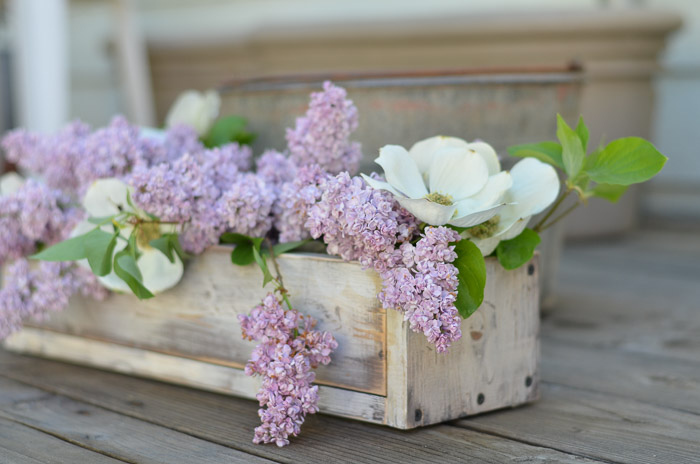
How to Root Lilac Cuttings
Follow these steps to root lilac cuttings:
Choose new growth for cuttings.
The best time to take cuttings is in late spring or early summer when the lilacs will have finished blooming and new shoots appear. This gives you the best chance at success.
Taking them at other times will usually mean taking hardwood cuttings which take longer to root.
Some claim the right time of day to take cuttings is early morning but I don’t adhere to this.
Note: Bloom time varies by your growing season. In my area, the Lilacs bloom in late spring so they are usually done by early summer. In your area, they may bloom in early spring.
Cut 4 to 6-inch lengths of the tender growth with your pruners. They are called softwood cuttings.
I have also taken longer cuttings then cut them in half to root. Take plenty of cuttings, there is about a 50/50 success rate so the more you try to start the more chance of success.
The stem cuttings should have at least 2 to 3 leaf nodes. A leaf node is the growing point where leaves are attached.
If you are taking a lot of cuttings then as you cut, place cuttings into a plastic bag with a touch of fresh water in it you can close to conserve moisture in the cuttings.
Any plant material you cut from a parent plant starts to lose moisture immediately and this helps conserve as much as possible.
Plant Cuttings Immediately
Once I have collected enough stem cuttings I take them to my potting bench and begin. Strip the bottom leaves from the cuttings and leave a leaf or two at the tip.
Dip a cutting into the rooting hormone. Create a hole with a pencil, stick, or anything you can stick down into the moist potting soil, then place the cutting into the hole.
Don’t worry about rubbing off the rooting hormone. I have used both the Olivia’s cloning gel and Hormex 8 powder. Both work but the Hormex 8 is a bit stronger.
You can usually find something similar at your local garden center.
Propagation Container
When I do a lot of cuttings at once I use a tray or propagation box, I built this one myself and have the instructions in another article and you can read that here.
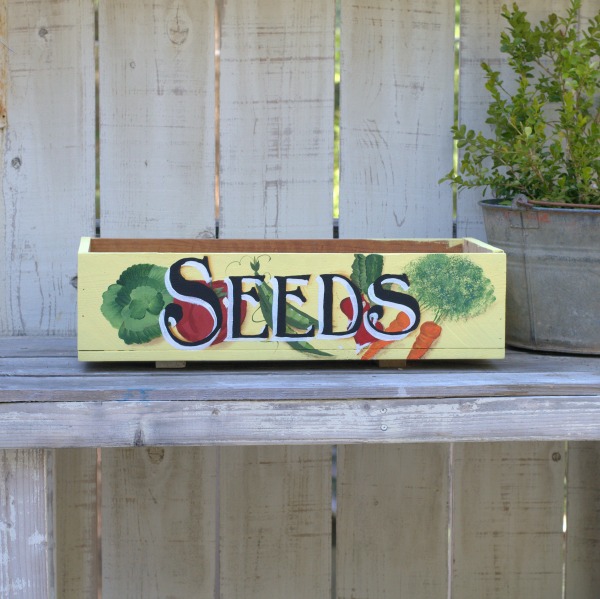
The potting medium I use is typically my own DIY Potting Soil mix with a little extra horticultural sand mixed in.
You can use regular potting mix purchased in bags. It is not recommended to use potting soil that has added fertilizers.
You can use small pots recycled containers and whatever else has good drainage. I have even used recycled fancy coffee cups.
The crate in the photos has slats on the bottom with wide gaps for great drainage. This one is sitting on the gravel floor of my greenhouse. It gets excellent indirect light.
Note: you do not want the cuttings in full sun or direct sunlight.
I place them far enough apart that they do not touch each other and away from the edges so they won’t touch the cover.
Some like to remove more of the leaves, as that is where fungus can grow more easily. I left them on so you could see them better in the photos.
Cover for Humidity
To maintain high humidity use a clear cover or translucent cover that fits the container you are using.
These fish tanks come in handy in creating a mini greenhouse effect while being tall enough for longer cuttings.
They last for years if proper care is taken with them. You don’t need to have it in a greenhouse, just be sure if yours is outside it is in a bright yet shaded area.
The clear plastic tubs from Wal-Mart or elsewhere also work well as a mini greenhouse or propagation box. I have also used 1 gallon jugs as mini greenhouses like my Winter Sowing Containers, see that here.
You want to keep the soil moist but not too wet. You shouldn’t need to water often. The humidity cover will keep the soil moist for long periods.
How long for Lilacs to Root?
You should have new roots in one to two months. You can leave new lilacs in place or you can plant them up into individual pots to grow on.
I let the young plants grow in pots until they develop larger root systems and are hardy enough to take the rigors of garden life.
![[DSC_0003-001%255B5%255D.jpg]](http://lh5.ggpht.com/-0OhAKMv15I4/T7MOFFS1KhI/AAAAAAAAFe0/JV1xSnWBxUQ/s1600/DSC_0003-001%25255B5%25255D.jpg)
I have even gotten new shoots at the base of my potted plants!
How long before New Lilac will bloom?
Lilacs can take three years to become mature plants so don’t expect blooms next spring.
Before you know it you will be picking beautiful bouquets like this one. Supposedly, lilacs prefer slightly alkaline soil but I have seen them flourishing in all kinds of soil.

Got a sharp shovel? An easier way to propagate a lilac shrub is to dig up lilac shoots aka new shoots at the base of the plant. Read here for all the details.
a faster way!
Start Lilacs from Suckers
Yes, starting lilacs from suckers is much faster and easier than cuttings. Grab a shovel and start digging for propagating Lilacs much quicker!
Propagate Lilac Suckers and a great way to get a larger plant faster!
And create heavenly-scented displays for your home.
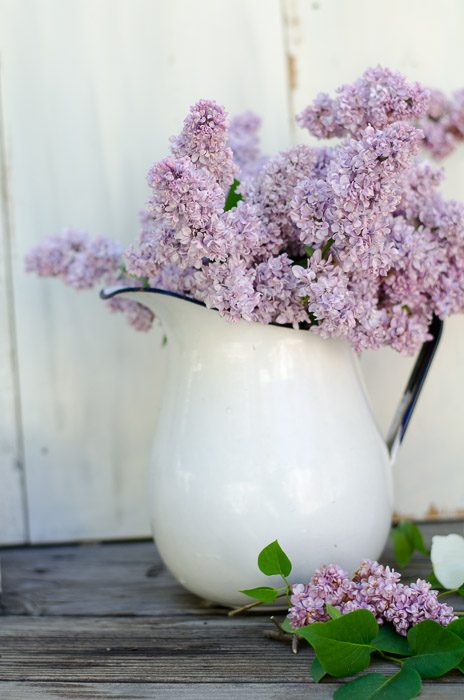
May is typically when my neighborhood is filled with the scent of Lilacs. You know late Spring has arrived in White Pines when everywhere you walk smells so sweet.
It is one of my favorite things about living here. The lilacs filling the yards and gardens in my neighborhood are all mostly heirloom varieties planted back in the 1940’s.
Some are located in full sun and others are in part shade and still bloom well.
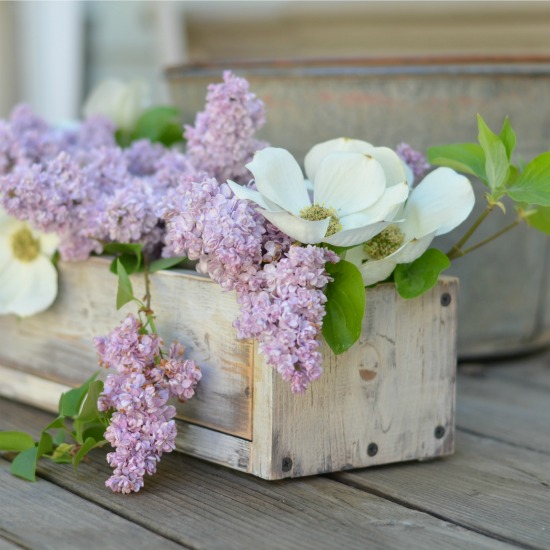
Need tips and tricks for growing and caring for your lilacs, How to Grow Lilacs.
Happy Gardening.


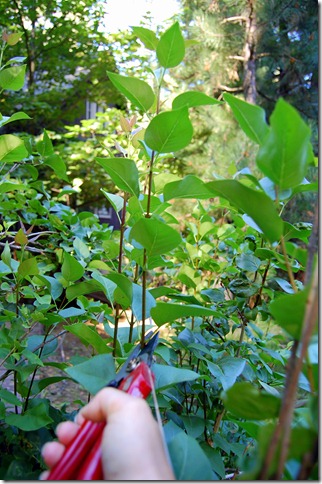


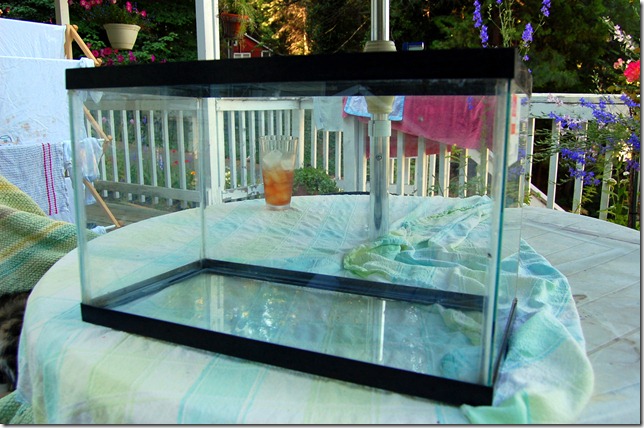

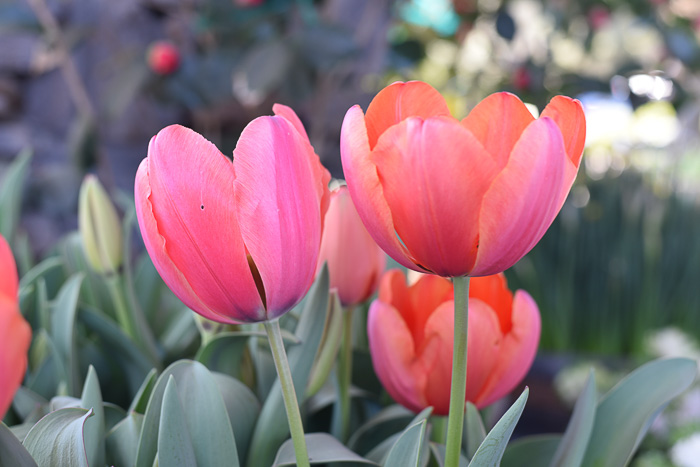


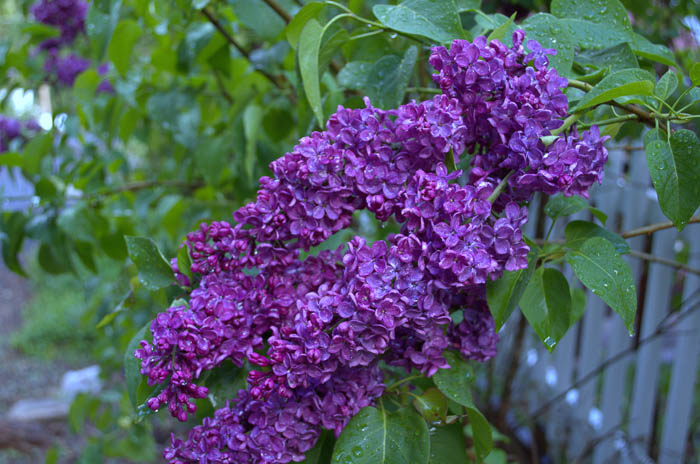
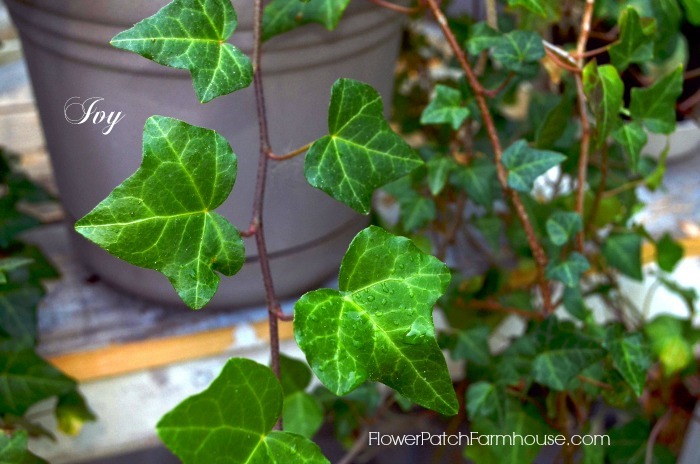
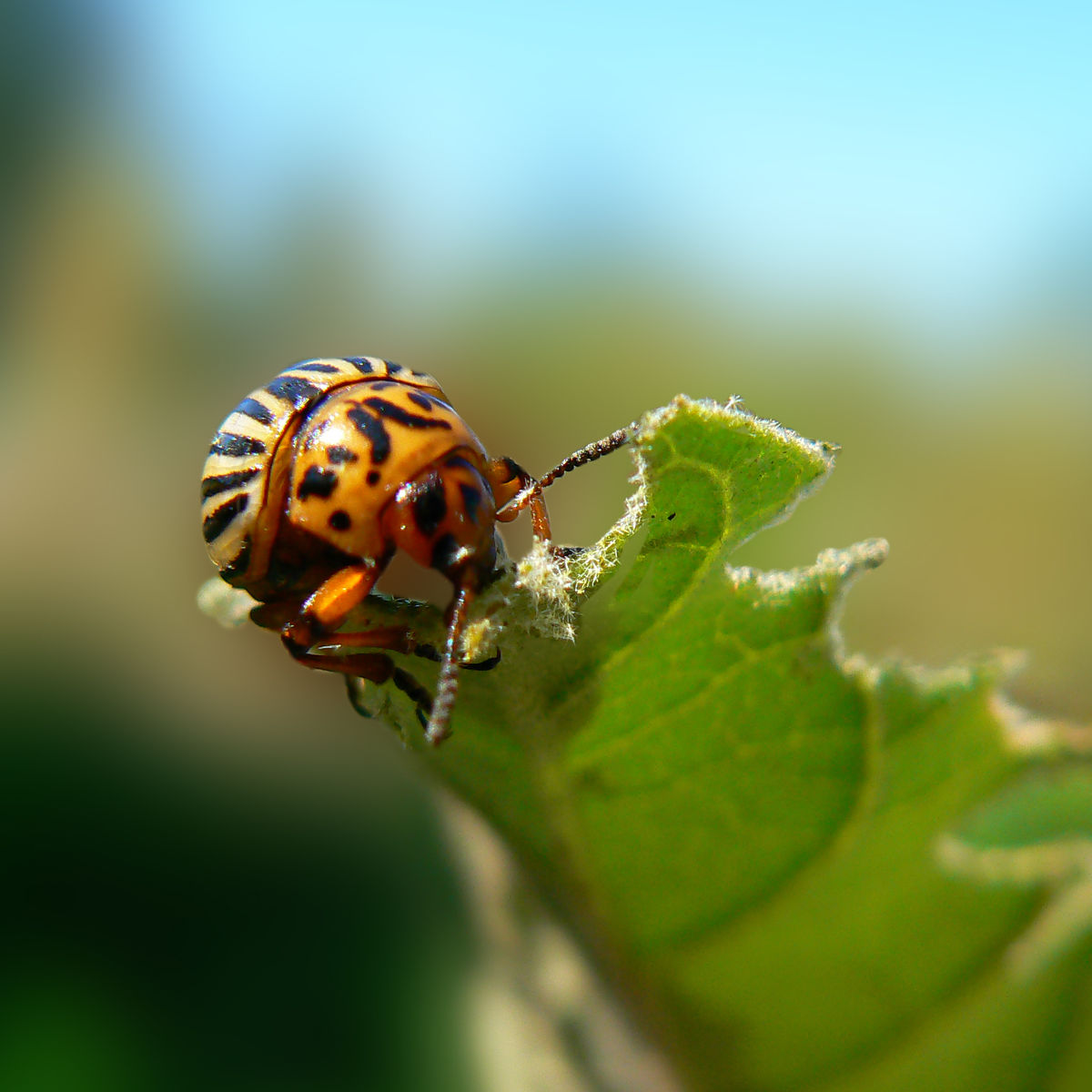
After attempting this for three years I have finally gotten a half dozen lilacs to survive and to put them in pots. Should I leave the pots to winter outdoors if I want to wait a year to plant them? Should I bring them inside to the basement? Or bring them inside to a sunny window sill?
You can keep them in the shade and they should do fine. Only direct sunlight will harm them.
I took some cuttings and put them in pots covered with clear plastic bags (with holes) this weekend. Now the temps have skyrocketed to the mid 90s. Will the extreme heat (especially under the bag) damage them? I can bring them inside, I am just not sure what is best.
Does anyone know where I can purchase some inexpensive Lilac cuttings this time of year? Thank you…please contact [email protected]
You may be able to salvage the cuttings you took by putting them into the shade. On your porch or covered patio would work great.
So glad I found your article! My new husband and I bought a house together and he would like to take lilac cuttings from his “old” house. The lilac was planted for his late wife’s last Mother’s Day, so it’s very special. Before I found your site, I took some cuttings, dipped in root powder, put in potting soil. However, they are all wilting. One thing I think I did wrong, after reading this, is too much water and also I put them in direct sunlight outside. So I’ll try again but I’m really not clear on the light issue. Shade is ok? Not a gardener here, so I don’t understand what indirect light is. I realize it’s not full light, no shade, but can it be outside but on a covered patio that gets zero direct light all day? Or does it need “dappled” light like under a tree…? Help!
If any are dried out and dead looking it is most likely a lost cause. Many times cuttings will sprout new leaves from the energy they have stored in them and are not a sign they have rooted. You should not have to be spraying them if they are in an enclosed environment. The humidity already present should be plenty. If there are droplets of water present on the plastic then it is too much. A shady spot on your porch is better than in a window inside. Outdoor light is 100’s of times better than any indoor light.
It is safe to remove them from the bag when you know they have roots. Are they in a container that you can see through the bottom of? That makes it so much easier to know if they have roots. If one is growing well then you can assume it has rooted but it is better to put it in a shady spot on your porch as stated before than direct sunlight. I wish you success. It sounds like you are doing pretty good.
I hope this is helpful. Pamela
Hello,
I am trying to grow lilacs from cuttings. Backstory: these are lilacs from my wife’s childhood home I gave her for her birthday. We were seeing lots of new buds on all branches after about 3 weeks but we went on vacation for a week and when we came home nearly all the buds dried out except for two branches with leaves/buds. Obviously, this being a gift that my wife loves, I’d like very much to do everything perfect to keep these two cuttings alive. The cuttings have now been in the pot for 6 weeks. My questions:
– these cuttings are currently in a clear plastic bag with a tomatoes cage holding up the plastic and I spray two or three times a day with a spray bottle to keep things humid. Everything I’ve read says to keep the cuttings humid. However, I’ve also read that lilacs are prone to fungus so I’m worried the leaves will rot if I leave them in too long and worried that they’ll dry out if I take them out too soon. How do I know when I should I move the cutting with the leaves (currently the biggest leaf is about a half inch wide) out of the humid evironment? Should I remove any cuttings that look like they are dead or probably not going to sprout buds to reduce the likelihood of rot and mold or is there still a chance these will generate buds?
– The cuttings are in a west facing window. I put a sheer curtain between the window and the pot to mimic indirect light which is what several online resources say the cuttings need. Now that the leaves on one of the cuttings are getting bigger, should I expose them to direct light? They probably get around 6 hours of light in that window. Is that enough?
Your help is very much appreciated. Thank you!
Happy to send pics of that would help.
Dan
Thanks for that info but since I get roses faster and without wasting potatoes with the method I use it is pointless to go that route for me. Why use a potato when potting soil suffices.
You MUST cut the eyes out of the potato before planting with a cutting in it. As the potato rots it acts as a fertiliser, and you will only get your new shrub NOT potatoes
Thank you so much for looking out for me! That is Backwoods Cottage and it is my old blog I had started on Blogger. When I switched to WordPress I did not know how to transfer content etc so I just started from scratch reposting some of my content from my old one. I agree about content thieves. I found one of my videos posted on another blog not long ago and it looked like they only scraped content to repost. It was sad to see how many followers they had so I know they were making bank on others peoples work.
Sorry it is backwoods cottage that has the same content.
Backwoods/ mountain same thing right?? No?
I hate it when people steal content and push it off as their own.
Just wondering if your pictures and content was given permission to be posted on another blog? If so disregard . I did a search for rooting lilacs. Your post showed up first and a few posts later there is one by mountain man or something. With your pictures and content. Just curious.
Our Lilacs bloom in early to late May also. After potting up the rooted cutting I keep it in a well lit but shady spot all summer and fall. I keep mine in my greenhouse during the winter the first season but then after that it is outside all the time. My greenhouse is unheated and not insulated so I don’t know how much protection it really gives.
I still have mine in pots now as I am not sure where I want to plant them. I keep changing my mind. I am in Zone 8, we get snowy winters but the temps rarely go below 10 degrees. In a colder areas in winter I would bury the pot in the ground if left outside and/or protect it someway. Maybe put it in an unheated garage.
I hope this helps.
Great post Pam. One thing to ask after the cuttings have developed roots: what do you do with the freshly potted young plant? In Minnesota, lilacs bloom early spring (mid to late May). Do you let the young lilac outside all summer, fall, then bring it in during winter? What is a good follow up?
Your best bet is to see if any of your neighbors have some. But also a local garden center (not big box store but a real plant nursery) would be able to tell you if there are any varieties that suit your area. I know a lot of hybrids have been bred to fit in many zones that are not typically hospitable to lilacs.
Great tutorial. Not sure if I can grow them in the zone we moved to. But, lilacs are my favorite. Pinned for later. & Shared.
Have you tried digging up suckers? I need to get my post on that done soon and then you can see what I mean if you don’t already.
I tried propagating lilac last year and failed miserably. I am going to follow your method. Thank you for sharing. Wish me luck.
You have been taking up suckers, which is another way to get lilacs from your plants. If your neighbors have suckers coming up from their lilacs then try to get them instead of just cuttings, it is a faster way to get blooming lilacs as they already have roots as you stated. 🙂
I have not tried doing cuttings yet. We just bought a new house and while the inside had been flipped the outside was either dead or dying from lack of care for years. There was one large lilac bush and it had lots of small plants coming up around the bottom. Early this spring I dig up some of these smaller plants and they had roots on them already. So I transplanted 4 and all 4 (so far) are doing well. More have already started coming up around the main plant of which I will try to transplant again next spring.
I will try doing some cutting from neighbor plants. Thanks for all this information!
Thank you Kendra! It is amazing what you can do with plants, I learn more each day and wish I could spend more time just experimenting!
I totally didn’t know this was possible! Going to try it! thanks so much for linking up with us… featuring you tomorrow 🙂 Hope you join us again!
I have read that it can even take up to 5 years so patience is the game with Lilacs. But they are worth the wait.
I am so glad I stumbled upon your post. Two summers ago I pulled up some suckers from a lilac plant and stuck it directly in the ground and it has been growing really well, but upon closer inspection it did not look like there were going to be any blooms this season either. I was questioning if I had planted it in the right spot and I was actually contemplating digging it up and moving it. Did not realize that they would not boom until at least year 3. I guess I’ll have to be a bit more patient.
Mary @ Orphans With Makeup
You can also dig up suckers at the base of the plant. I am trying to get a post on that up soon.
It would make a great house warming gift for someone moving. Leaving behind such treasures is the toughest part of moving.
Yes, I do this for my roses too and am working on that post now. I take the rose cutting later in the season as they need to not be too fresh and soft.
This way has worked best for me than any other for rooting cuttings so I stick with it. Tried the potato method and all I got was baby potatoes. 🙂
From the little I know about West Texas lilacs just would not do well for you without a lot of work. Ask at a local nursery or garden center where the people know their stuff and find out what you can plant that will be as enjoyable for you or if there is a lilac that will work where you are at. I do not have a nursery license and it is illegal for me to ship plants across state lines unless I get cleared by the Gov. for it. sorry. 🙁
Neat idea, this might work on rose cuttings too and apple tree cuttings? I usually can take any plant stick it into the dirt n takes right off but roses n apple trees..lucky I guess,
Great post and I liked the hacks: the fish tank cover, the open edges around so you water, the brains to put it somewhere with drainage.
Pamela, thank you for sharing about the lilacs. When I was small, my cousins and I played Ring-Around-the-Rosie at my Grandmother’s lilac bush. I MISS THE HEIRLOOM LILACS SO MUCH! I bought a plant at the nursery, but it has no fragrance at all. WOULD YOU EVEN CONSIDER selling me some ‘starts’? Is it even legal to send such over state lines? I’m in hot, dry West Texas….and don’t have a clue where I can get the Heirloom plants. I ordered some Delphinium seeds on your advice, and am so anxious to plant them this Fall.
This is a needed post about my favorite flower. Wouldn’t it make a lovely housewarming gift to someone who hates to leave their favorite bushes behind when they move. I remember how my sister hated to leave the lilacs at her Ohio home when she and her husband moved to another state. The lilacs were from my farm in Wisconsin and they had a sentimental attachment for her. -Ginene
Thank you! I have a few lilacs in the back – would love to “fill in” the fence row with lilac!
Thanks for this tutorial, Pam. I have done some propagating with easy things like willows, etc., but have not tried lilac or roses. I usually just stick them in a pail of water till they sprout roots. I’ve had success this way. But then again, willows will root in anything!
I’ve not had any success with the plastic bags, I did give them a try. Makes sense about the carbon dioxide. But I always had the fungus problem with the bags.
Another tip; if you use a plastic bag and put soil in the bottom (or a smaller pot) then blow into the bag before sealing it up tightly with a twist tie, this encourages the plant to live longer and the environment is less hospitable for fungus to start (no, not because of your bad breath, but because it’s got carbon dioxide in it) and the cutting then has a chance to root.
All I can suggest, if I have not before, is start 3 times as many as you think you want, you lose some but this will hopefully insure you get some to root. You can always give away what you don’t wish to plant in your own garden. I wish you success.
Hi Pamela, my husband really likes our neighbor’s lilac. We tried to propagate some last year but they all died (although a few stayed green for a few weeks, but finally died). I am not sure what went wrong. I will try your method this year. Thank you for sharing how you propagated yours. Christa
The lilacs did just as well if not better than my roses, I lost less of them. I usually am about 50% successful so I would say start double what you wish to end up with.
Great tips. Thank you for sharing. I think I’ll try this with my roses. I seem to have better luck with them. LOL
Pamela, thanks for sharing this informative post with Share Your Cup. I have gotten starts of bushes from family before, but they were ones that had started rooting on their own. White lilacs, Rose of Sharon, and Forsythia have all had success for me. I’ve always heard that it takes 5-7 years before the Lilac will bloom. 3 is certainly alot better.
hugs,
Jann